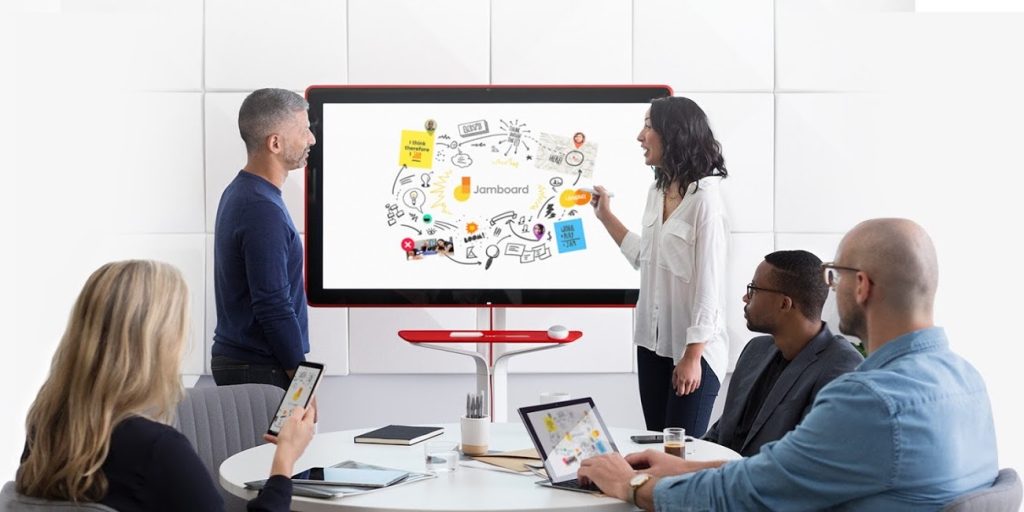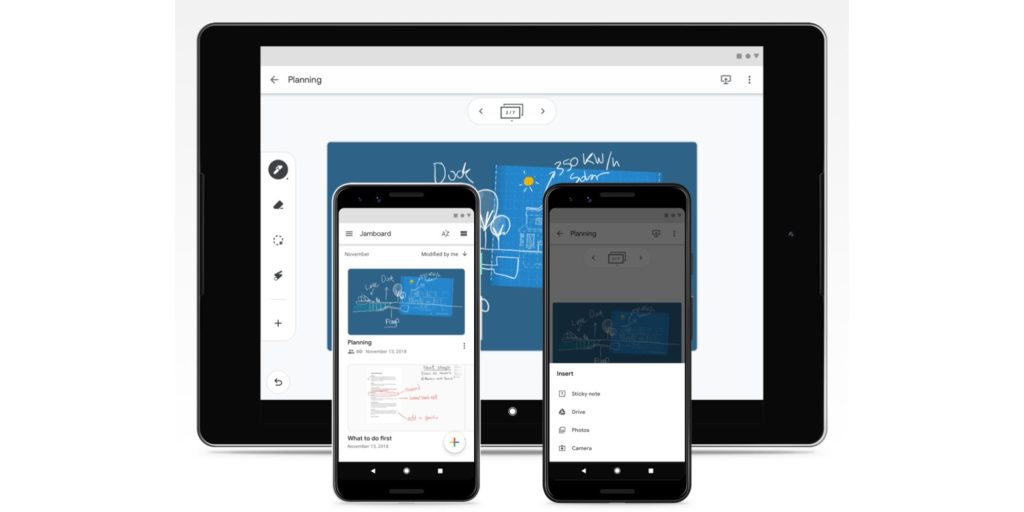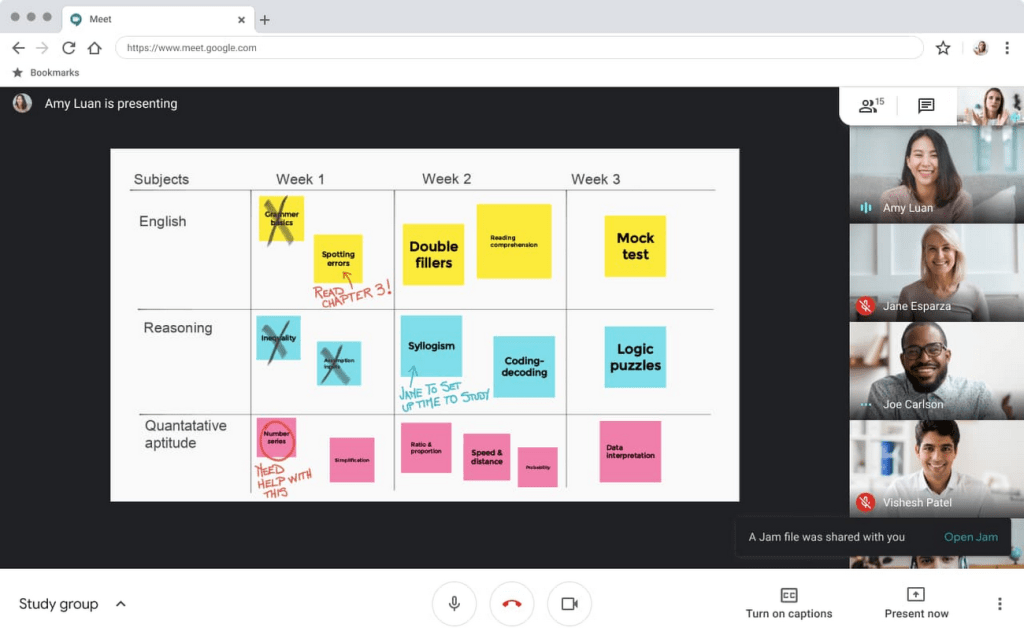
Back in 2016, Google announced a 55-inch 4K touchscreen that serves as a digital whiteboard for real-time collaboration. Google Jamboard and its mobile apps are now shutting down in 2024.
The Google Workspace team is aware that digital whiteboards are popular, but has decided to cede that functionality to partners — FigJam, Lucidspark, and Miro, specifically — and “focus on core content collaboration across Docs, Sheets, and Slides.”
It comes as Apple last year added a very consumer-facing Freeform app to every iPhone, iPad, and Mac, while Microsoft just announced the 50 and 85-inch Surface Hub 3.
For several years, Jamboard was Google’s first-party offering, and it launched as a “collaborative, digital whiteboard built for the cloud” at $4,999. Each document, referred to as a Jam, could be worked on from other Jamboards, the mobile apps (that’s a Pixel C in the cover image above), and a web client. All work was saved to Google Drive, with support for projecting into Hangouts/Meet.
You could easily clip content from the web, as well as add images stored in Google Drive. The hardware supported 16 simultaneous touch points with a 120 Hz touch scan rate (and 60 Hz video refresh), as well as Google Cast. The passive stylus (and eraser) did not require batteries, while the Jamboard just had a single cable for power. It could be mounted on a wall, or wheeled around.
…in late 2024 we will wind down the Jamboard whiteboarding app as well as continue with the previously planned end of support for Google Jamboard devices.
Jamboard devices have an Auto update expiration (AUE) date, just like Chromebooks, and by the time it stops getting updates in September 30, 2024 will have a lifespan of around seven years. Devices will keep working as a literal whiteboard with basic drawing capabilities, but won’t be able to access cloud content. This date has been known since Jamboard became generally available for purchase in 2017, while Google has been winding down sales over the past three years.
Google says “Jamboard users make up a small portion of our Workspace customer base.” However, to lessen the impact, it’s continuing to integrate the third-party offerings from FigJam, Lucidspark, and Miro across Workspace so that heavy whiteboard users will have several direct alternatives. This includes the existing ability to launch a whiteboard in Google Meet with more advanced screen-sharing and adding sessions when scheduling in Google Calendar.
The migration plan also involves bringing those whiteboarding apps to Series One Desk 27 and Board 65 devices (seen below) by Avocor. The latter is a 65-inch touchscreen that launched this year and was already advertised as a replacement to the original Jamboard. Apps from those three services are coming by early 2024.
Lastly, Google will offer a “retention and migration path for Jamboard data.” This will let existing Jams be imported into FigJam, Lucidspark, and Miro.
Notably, Google says it will be working “directly with educational institutions to compensate them for their Jamboard devices.” The company tells us that this will occur on a partner-by-partner basis.
With a strong foundation of industry-leading partnerships in place, we’re committed to ensuring our users have a smooth transition from Jamboard to Avocor devices and our partner whiteboarding apps.
FTC: We use income earning auto affiliate links. More.






Comments